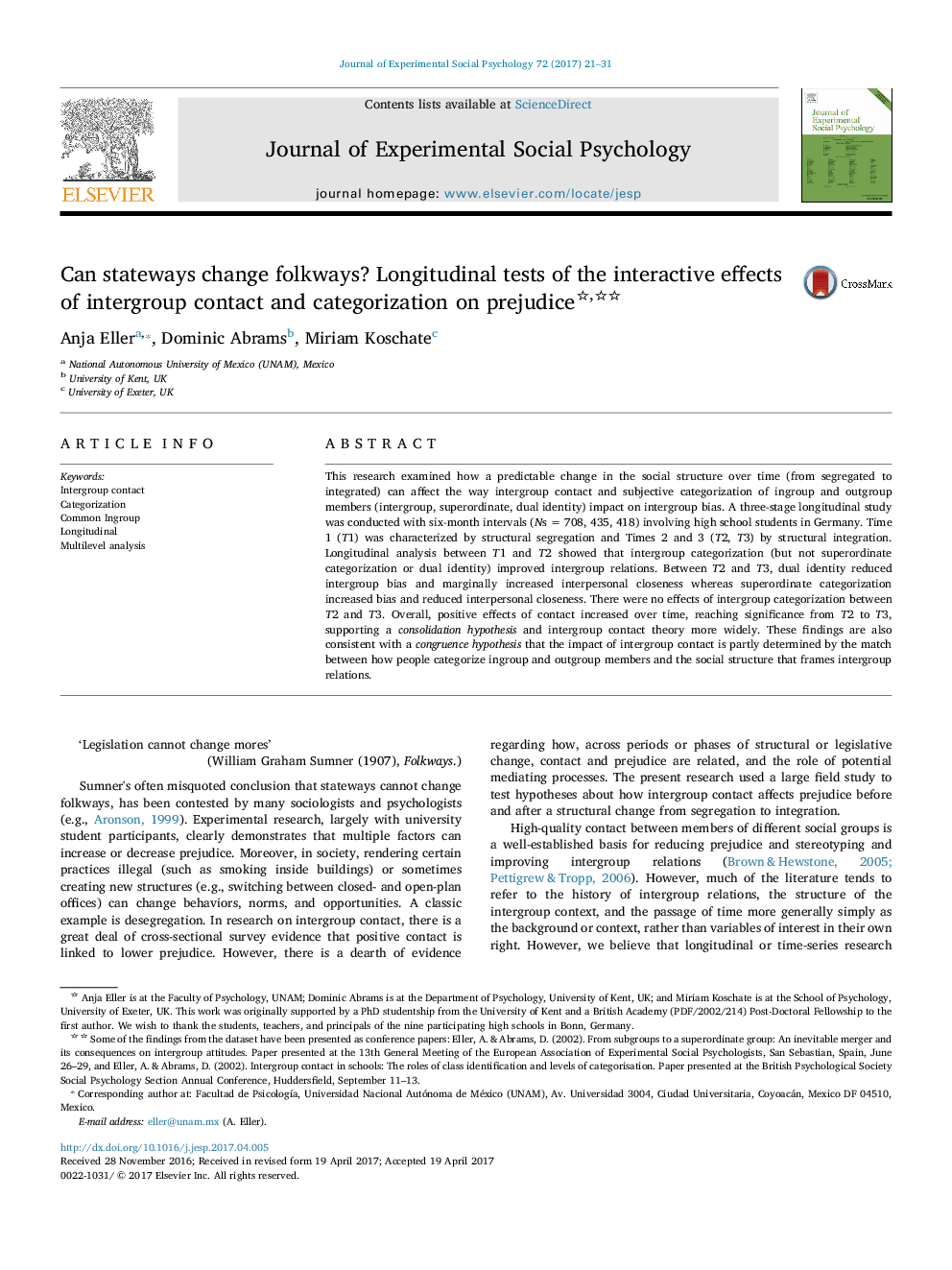ترجمه فارسی عنوان مقاله
آیا می توانم راه های مردم را تغییر دهم؟ آزمونهای طولی اثرات تعاملی تماس میان گروهی و طبقه بندی بر تعصبات
عنوان انگلیسی
Can stateways change folkways? Longitudinal tests of the interactive effects of intergroup contact and categorization on prejudice
| کد مقاله | سال انتشار | تعداد صفحات مقاله انگلیسی |
|---|---|---|
| 153836 | 2017 | 11 صفحه PDF |
منبع

Publisher : Elsevier - Science Direct (الزویر - ساینس دایرکت)
Journal : Journal of Experimental Social Psychology, Volume 72, September 2017, Pages 21-31

